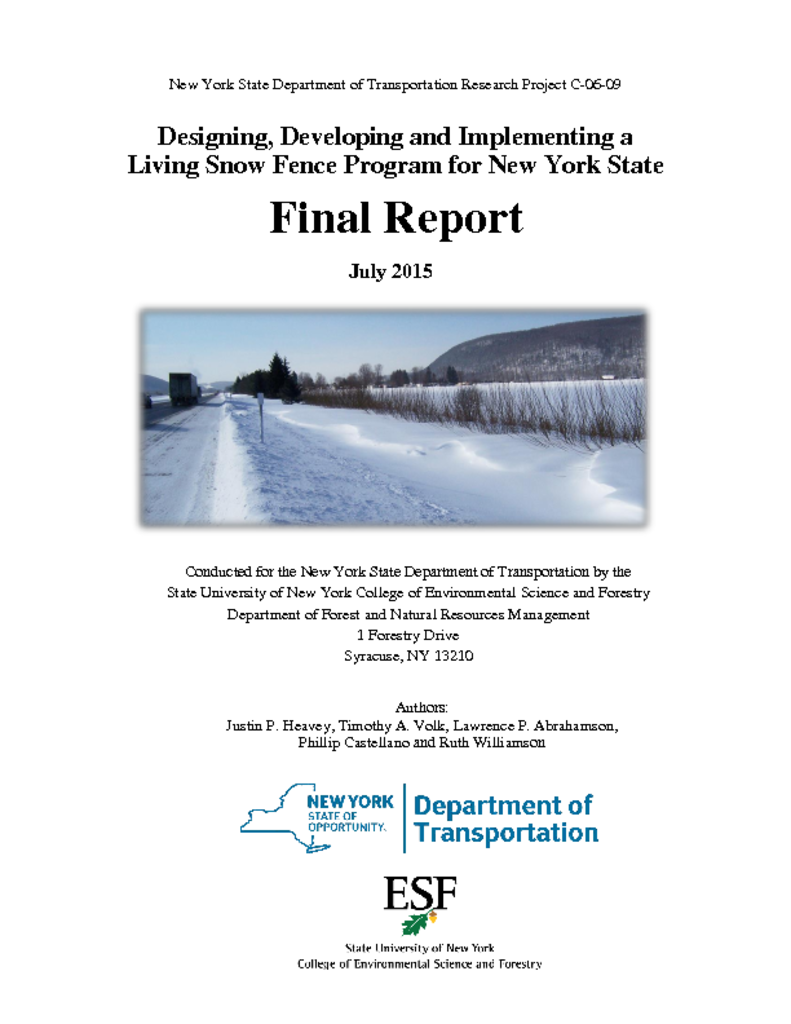Living snow fences (LSF) are a form of passive snow control designed to mitigate blowing and drifting snow problems on roadways. Blowing and drifting snow can increase the cost of highway maintenance and create hazardous driving conditions when snow is lifted off the ground by wind and transported toward a road. LSF disrupt wind patterns, causing blowing snow to be deposited in designated areas around the fence and away from the road. LSF are rows of vegetation (trees, shrubs, corn) that perform the same function as structural (wooden, plastic) snow fences with potentially longer life cycles and better returns on investment. This project provided a literature review; training materials; classroom and field workshops on LSF design, installation and maintenance; four demonstration sites with installed LSF; protocols for the assessment of sites and operational fences; a study of 18 LSF using these protocols; the identification of key factors for successful LSF in NY State and beyond; and a benefit-cost tool. Key research outcomes include improved understanding of snow trapping function as LSF grow over time and improved design recommendations based on these findings. Applying these design standards along with best practices for installation and maintenance developed in this project can increase the feasibility and effectiveness of LSF. Well designed and managed LSF can produce numerous economic, safety and environmental benefits to transportation agencies and the public.




